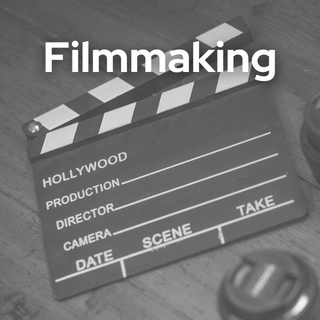Anatomy of editing a two camera scene
Digitalfilms by Oliver Peters
 With the increase in shooting ratios and shortened production schedules, many directors turn to shooting their project with two cameras for the entire time. Since REDs and Canon HDSLRs are bountiful and reasonably priced to buy or rent, even a low budget indie film can take advantage of this. Let me say from the beginning that I’m not a big fan of shooting with two cameras. Too many directors view it as a way to get through their shooting schedule more quickly; but, in fact, they often shoot more footage than needed. Often the B-camera coverage is only 25% useful, because it was not properly blocked or lit for. However, there are situations where shooting with two cameras works out quite well. The technique is at its most useful when shooting a dramatic dialogue scene with two or three principal actors. (Click the images below for expanded views.)
With the increase in shooting ratios and shortened production schedules, many directors turn to shooting their project with two cameras for the entire time. Since REDs and Canon HDSLRs are bountiful and reasonably priced to buy or rent, even a low budget indie film can take advantage of this. Let me say from the beginning that I’m not a big fan of shooting with two cameras. Too many directors view it as a way to get through their shooting schedule more quickly; but, in fact, they often shoot more footage than needed. Often the B-camera coverage is only 25% useful, because it was not properly blocked or lit for. However, there are situations where shooting with two cameras works out quite well. The technique is at its most useful when shooting a dramatic dialogue scene with two or three principal actors. (Click the images below for expanded views.)
Synchronization
The most critical aspect is maintaining proper sync with audio and between the two cameras. In an ideal world, this is achieved with matching timecode among the cameras and the external sound recorder. Reality often throws a curve ball, which means that more often than not, timecodes drift throughout the day or the cameras weren’t properly jam-synced or some other issue. The bottom line is that by the time it gets to the editor, you often cannot rely on timecode for all elements to be in sync. That’s why “old school” techniques like a slate with a clapstick are ESSENTIAL. This means roll all three devices and slate both cameras. If you have to move to stand in front of the B-camera for a separate B-camera slate and clap, then you MUST do it.
When this gets to post, the editor or assistant first needs to sync audio and video for both the A-camera and B-camera for every take. If your external sound recorder saved broadcast WAV files, then usually you’ll have one track with the main mix and additional tracks for each isolated microphone used on set. Ideally, the location mixer will have also fed reference audio to both cameras. This means you now have three ways to sync – timecode, slate/clapstick and/or common audio. If the timecode does match, most NLEs have a syncing function to create merged clips with the combined camera file and external audio recording. FCP X can also sync by matching audio waveforms (if reference audio is present on the camera files). For external syncing, there’s Sync-N-Link and Sync-N-Link X (matching timecode) and PluralEyes (matching audio). read more...











Leave a comment
Please note, comments must be approved before they are published
This site is protected by hCaptcha and the hCaptcha Privacy Policy and Terms of Service apply.